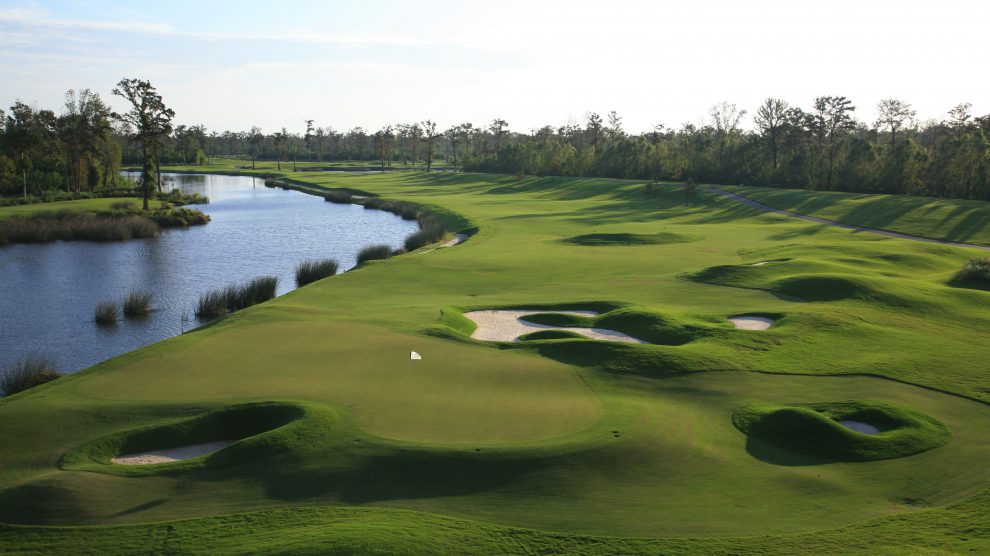Are you ready for something just a little bit different? The PGA Tour is dipping its proverbial toe in the water with alternative championship formats, a la the European Tour, with the Zurich Classic this week. Not since the 1981 Walt Disney World Team Championship has the Tour held an official-money team competition. Dynamic duos will play alternate shot on Thursday and Saturday; best ball on Friday and Sunday.
The course hosting this team event? TPC Louisiana, located just west outside New Orleans in Avondale, La. Opened in 2004, this Pete Dye design with consultation from PGA Tour players Steve Elkington and Kelly Gibson is typical Dye: wide, bumpy fairways, small-ish greens, plenty of hazards, drainage grates in natural collection areas, and a few tasty short par 4s. As with other TPC locations, the conditioning of the course is always superb, and, lucky for Cajun natives, the course is open to the public. Thus, making it one of the few and nicest public courses the Tour plays each year.
When people think of New Orleans and the outdoors, they think swamp, marshes and wetlands. TPC Louisiana is no different. Stretching across more than 250 acres of wetlands along the Mississippi River delta, the course is an exceptional representation of the natural local habitat. So much so, the golf course is part of the Audubon Golf Trail and a proud member of the Audubon Cooperative Sanctuary program. Expect a few camera shots of unique local water fowl and maybe the occasional alligator.
As for the course, the layout incorporates groves of cypress and oak trees – with Dye adding plenty of water hazards and bunkers to make for an interesting game. The golf course features more 100 bunkers as well as five ponds, either of which come into play on every hole. At 7,400 yards the par 72 course is a bit of a Pete Dye anomaly on tour, being ranked among the PGA Tour’s bottom third in resistance to scoring (that is, expect to see some very low scores). Now with teams playing best ball and alternate shot one can assume the winning score could be eye-popping...but who doesn’t love birdies in bunches?
Holes To Watch
Hole 6 - Par 4, 476 yards
This long two-shotter requires a long, straight drive to avoid the large pond running down the left side of the fairway. The approach shot turns almost 90 degrees toward the hole and will reward a well-struck hybrid or long iron depending on the wind. Near the green avoiding the large bunker right and a few pesky pot bunkers around the green are key to avoiding a big score.
Hole 12 - Par 4, 492 yards
Another monstrous par 4, this hole requires serious shot making and will be cool to see especially in alternate shot format. The tee shot should be hit with a slight draw leaving a long-to-mid iron into a green that requires a baby fade. A massive bunker is on the right, while a large chipping area dominates the left side of the big green.
Hole 13 - Par 4, 377 yards
One of the aforementioned short par 4s, this tricky hole tempts the long hitter into trying to drive the smallest green on the course, which is surrounded by pot bunkers that scream double bogey. The smart, tactical play is a solid drive to the right of a large cypress tree in the fairway that leaves a wedge for a better chance at birdie.
Hole 18 - Par 5, 585 yards
It wouldn’t be a true Pete Dye design without the closing hole being a long dogleg with a hazard running the length of the inside of the dogleg. The fairway is extremely generous and relatively uninteresting. However, the bunkering around the green complex is show-stopping, artificial, but striking nonetheless. When they catch a ball expect an interesting recovery shot 9/10 times. This hole should provide an entertaining conclusion to the tournament.

